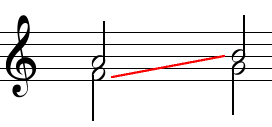Answer: It's always a pleasure to hear from someone who is studying counterpoint - an esoteric art.
I hope you won't mind if I review first what a tritone is, just in case that's part of the question. "Tritone" is a name for the interval of an augmented 4th, because it is formed of 3 whole tones added together. It traditionally was regarded as a difficult interval: hard to sing and hard to get in tune; it was thought to have a harsh sound. The same was true of its inversion, the diminished fifth. The ideal 16th century counterpoint tries to avoid leaping by a tritone, or even outlining one in melody.
If two voices separated by a major third both move in the same direction by a whole step, the lower and upper notes of the first and second intervals will form a tritone. That's the origin of the "rule" about parallel major thirds.
Fortunately it doesn't come up that often: in every mode and in the major scale there is only one place where this can happen naturally. In the major scale it's between the 4th and 5th degrees:


